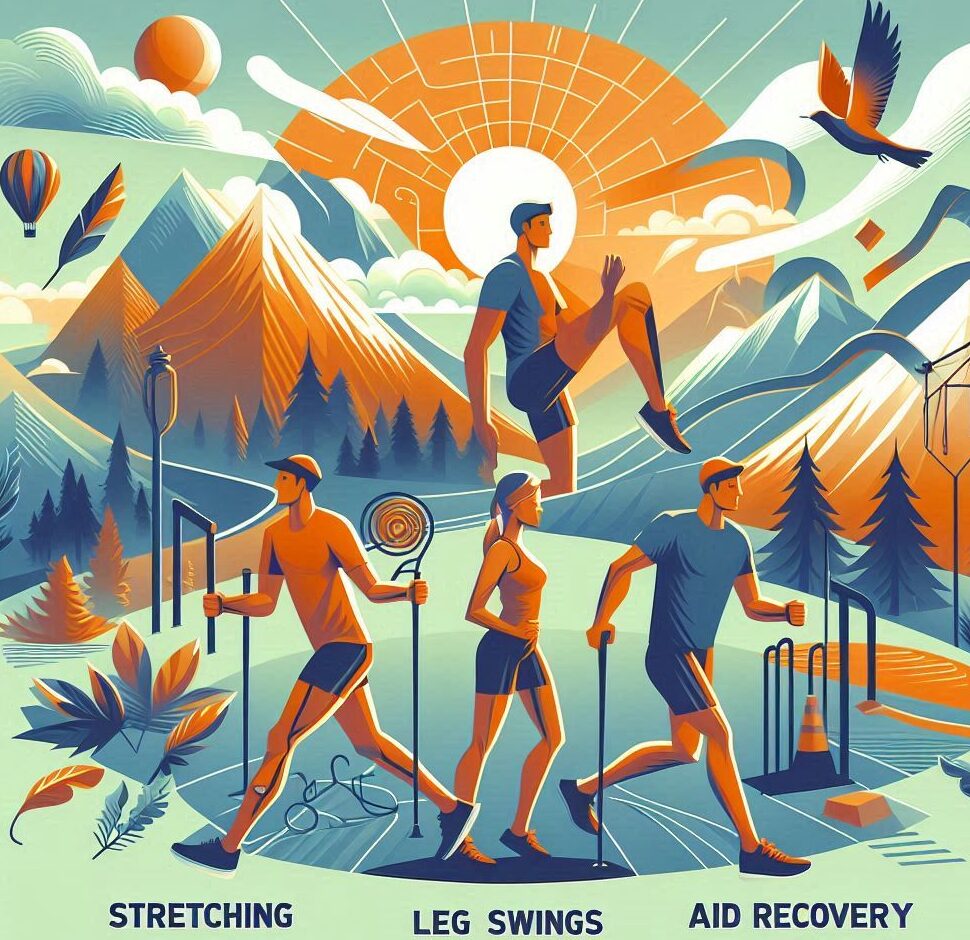Stretching isn’t just about bending into fancy shapes; it’s crucial for keeping muscles flexible and joints moving smoothly. Now, imagine your muscles like rubber bands. If they’re not stretched, they won’t be able to extend fully, raising the risk of tears and strains.
Skipping stretching is like driving your car without oil. It can stiffen your muscles, limiting your range of motion and increasing the likelihood of minor injuries that can sideline you from activities you love. Whether you’re a seasoned athlete or a weekend warrior, stretching plays a big role in staying injury-free.
Scientists and fitness pros back up the benefits of regular stretching. Various studies highlight that a good stretch routine keeps muscles limber, reduces the chance of chronic pain issues, and can even improve performance.
Think about stretching as your secret weapon to keep your body going strong. It’s not just a short-term fix; it’s part of a long-term strategy for maintaining your athletic prowess and enhancing your overall quality of life.
Dynamic Stretching Techniques: Preparing the Body for Activity
Dynamic stretching is about actively moving your muscles and joints through full ranges of motion, waking up your body in the process. Think of it as the dress rehearsal before a performance, setting the stage for everything that follows.

To get the juices flowing, you might want to try moves like leg swings, walking lunges, or arm circles. Each one is designed to prep your body for more intense physical activity by increasing heart rate and boosting blood flow, basically revving up your engine before you hit the gas.
Form matters. With dynamic stretches, you’re moving, so it’s important to keep movements controlled and mimic the motions you’ll use in your workout or sport. Whether you’re heading out for a run or about to hit the gym, fitting these moves into your routine can make a world of difference.
If you’re spending more time at your desk than on the field, dynamic stretching is still your friend. It helps counteract the slouched-over-a-computer posture, easing tension, and reducing fatigue. You can sneak in a few of these stretches during your day to break up the monotony and boost your energy.
Static Stretching Post-Exercise: Aiding in Recovery and Relaxation
Static stretching focuses on holding stretches for a period, usually after your workout, when muscles are warm and elasticity is increased. Think of it like the cool-down session for your workout, easing your body back into a relaxed state.
The science behind static stretching shows it aids in muscle recovery by increasing flexibility, helping prevent stiffness, and enhancing the muscles’ ability to repair. Consider it a way to tell your body it’s time to start the recovery process.
Try stretches like the seated hamstring stretch or the classic quadriceps stretch to maintain flexibility. These will help your muscles fully unwind, aiding recovery and reducing the risk of soreness the following day.
A good rule of thumb is to hold each stretch for about 30 seconds. Consistency matters here—make it a habit to stretch after each workout. The more regularly you stretch, the more benefits you’ll reap over time.
Sometimes, the post-workout fatigue whispers a too-familiar excuse to skip stretching. Fight the urge. Committing to these few minutes after exercise can transform how your body feels day in, day out.
Advanced Stretching Practices: Integrating Yoga and Pilates for Optimum Recovery
Yoga and Pilates are more than just fitness trends; they offer excellent stretching routines that blend strength, flexibility, and mindset. Both practices can seamlessly fit into any recovery plan, offering unique approaches to stretching that cater to all fitness levels.
Yoga introduces stretches that double as balancing exercises, making your body more tuned to its alignment and posture. Poses like the downward dog or child’s pose not only stretch but also promote relaxation and mental clarity.
Pilates, on the other hand, emphasizes core strength and precise movement, which can boost muscle tone and stability. It works wonders on posture and helps you stay injury-free by fully engaging your muscles in smooth, controlled motions.
Creating a well-rounded recovery strategy means considering a mix of these advanced techniques alongside your existing routine. Whether you’re supplementing your running with a weekly yoga session or integrating Pilates into your strength training, these practices ensure that every muscle gets the attention it deserves.
Here’s a little transparency: Our website contains affiliate links. This means if you click and make a purchase, we may receive a small commission. Don’t worry, there’s no extra cost to you. It’s a simple way you can support our mission to bring you quality content.”
